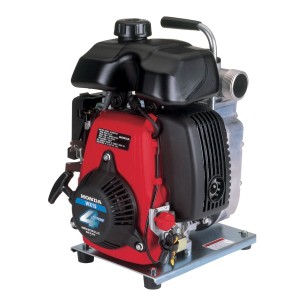 Honda’s WX15 water pump is generally a powerful and reliable way to displace water outdoors, but even this reliable water pump can occasionally experience technical issues that might cause operators a few headaches. The good news is that these technical issues, which often affect the engine or pumping mechanism, are easily solved. A few diagnostic steps and adjustments will typically restore the engine’s power and allow the pump to properly move water as needed. Before contacting a local Honda technician, consider a few simple troubleshooting tips that will solve common problems and save a great deal of time in the process.
Honda’s WX15 water pump is generally a powerful and reliable way to displace water outdoors, but even this reliable water pump can occasionally experience technical issues that might cause operators a few headaches. The good news is that these technical issues, which often affect the engine or pumping mechanism, are easily solved. A few diagnostic steps and adjustments will typically restore the engine’s power and allow the pump to properly move water as needed. Before contacting a local Honda technician, consider a few simple troubleshooting tips that will solve common problems and save a great deal of time in the process.
Safety Disclaimer: Troubleshoot Without Getting Injured
Troubleshooting can be dangerous, even if the pump isn’t operating at full capacity or at all. Before getting started, make sure that the pump has had time to cool off after a recent period of use. Disconnect the spark plug and drain any fuel that might be left in the water pump to ensure that it won’t accidentally spark or leak while diagnostic work is taking place. Restore fuel and spark plug positioning when the issue has been solved, or when the time has come to test a potential fix for the issue at hand.
Diagnosing and Solving Engine Problems
Some of the most common problems affecting WX15 owners involve the engine. In most cases, these problems are easy to diagnose and even easier to fix. Here’s what to know about the two most common types of WX15 engine trouble.
1. The Engine Won’t Start at All
Few things are more frustrating than an engine that just wont’ start, but this is a problem that is actually pretty easy to fix for most WX15 water pump owners. Start by checking all of the basic elements that could derail engine operation. This means checking the fuel level, making sure the fuel valve is on, setting the choke in the proper position, and making sure that the engine’s fuel hasn’t gone stale. If these basic checks do not fix the problem at hand, consider more involved maintenance procedures that may solve the issue.
In rare cases, it may be necessary to check the oil level. If oil is low, the engine will turn off and refuse to start until the situation is rectified. This is for the pump’s protection. The spark plug may also be fouled or wetted, especially if the engine was flooded during ignition. In rare cases, a serious issue may be affecting the fuel filter, ignition system, or carburetor. A Honda technician must resolve these issues.
2. The Engine Lacks Sufficient Power
There are typically three quick and easy things to check if the engine suffers from low or inconsistent power levels during water pump use. The first of these is the air filter. If the filter is clogged or excessively dirty, it will prohibit the engine from operating properly or at full power. Bad or stale fuel could also be to blame, and operators may want to drain old fuel and replace it with fresh fuel as a precaution. Finally, check that the throttle is in the proper position for extended use. If it isn’t, it could be causing the problem.
As with an engine that doesn’t start, serious causes include a defective ignition, carburetor, or fuel filtering system. All three of these serious causes of engine trouble must be resolved by a qualified Honda technician.
Diagnosing and Solving Pump Problems
When engine problems aren’t the cause of water pump problems, the pump itself is often to blame. Though frustrating, pump problems can be easily addressed and fixed by checking a few fundamental controls and parts within the equipment.
1. There is No Pump Output at All
If the pump isn’t actually pumping anything, the first thing to do is consider whether or not the pump was properly primed before operation. If priming did not take place, stop the engine and prime the pump before continuing. If this does not solve the problem, check that the suction hose has not collapsed or suffered from damage.
Make sure that the strainer is properly submerged and that it has not clogged. Excessive head may also be to blame, and this problem can be fixed by simply relocating the water pump to a better area. If these diagnostic steps do not solve the problem, consider troubleshooting the engine instead of the pump.
2. Low Pump Output
If the water pump suddenly struggles to produce full output, the most common cause of the problem is a collapsed suction hose. In this case, turn the pump off and replace the hose before continuing. This issue may also be caused by problems with the discharge hose, a clogged strainer, or an air leak at either hose connector. In a small number of cases, engine problems may to be blame. In those cases, this problem may require professional service to resolve.
Get the Parts Needed for Common Fixes at HondaLawnParts.com
The WX15 water pump is one of Honda’s most popular models, but it does need occasional troubleshooting and maintenance in order to stand the test of time. HondaLawnParts.com has an extensive selection of OEM replacement parts that will make maintenance and troubleshooting easier to conduct. With an online search tool and plenty of sorting options, it’s also easy to find a perfectly compatible part for any Honda water pump on the market.
